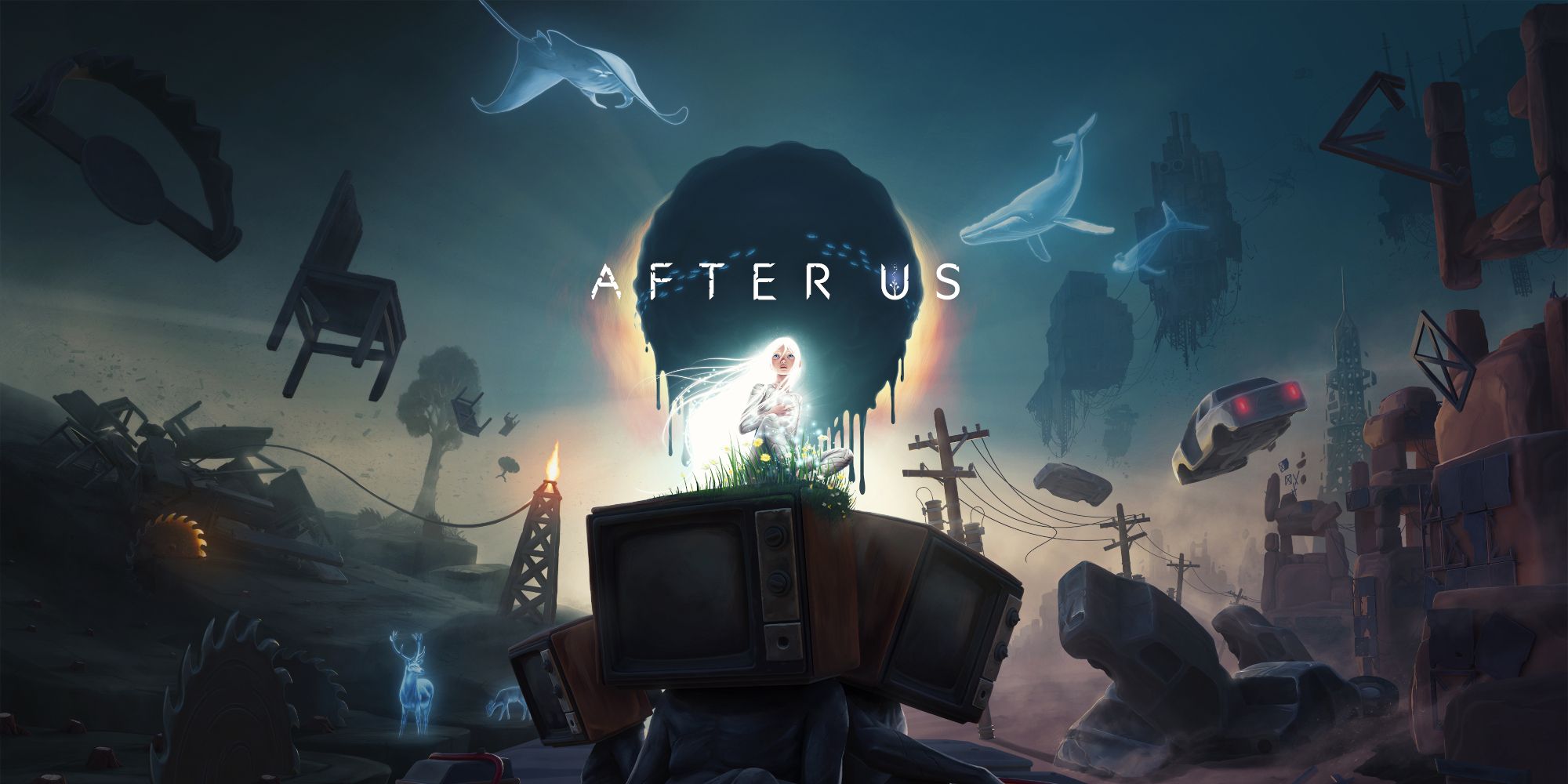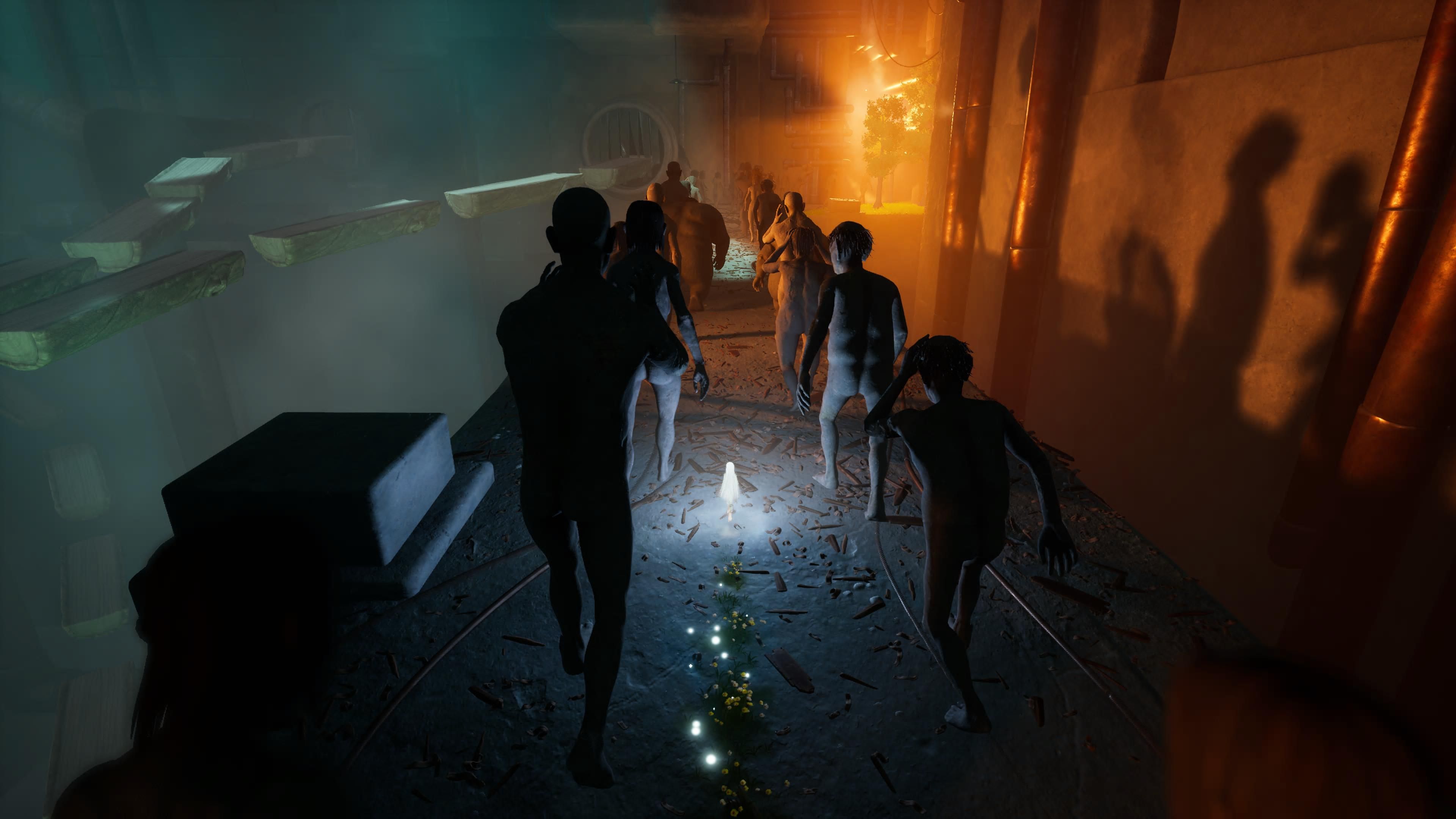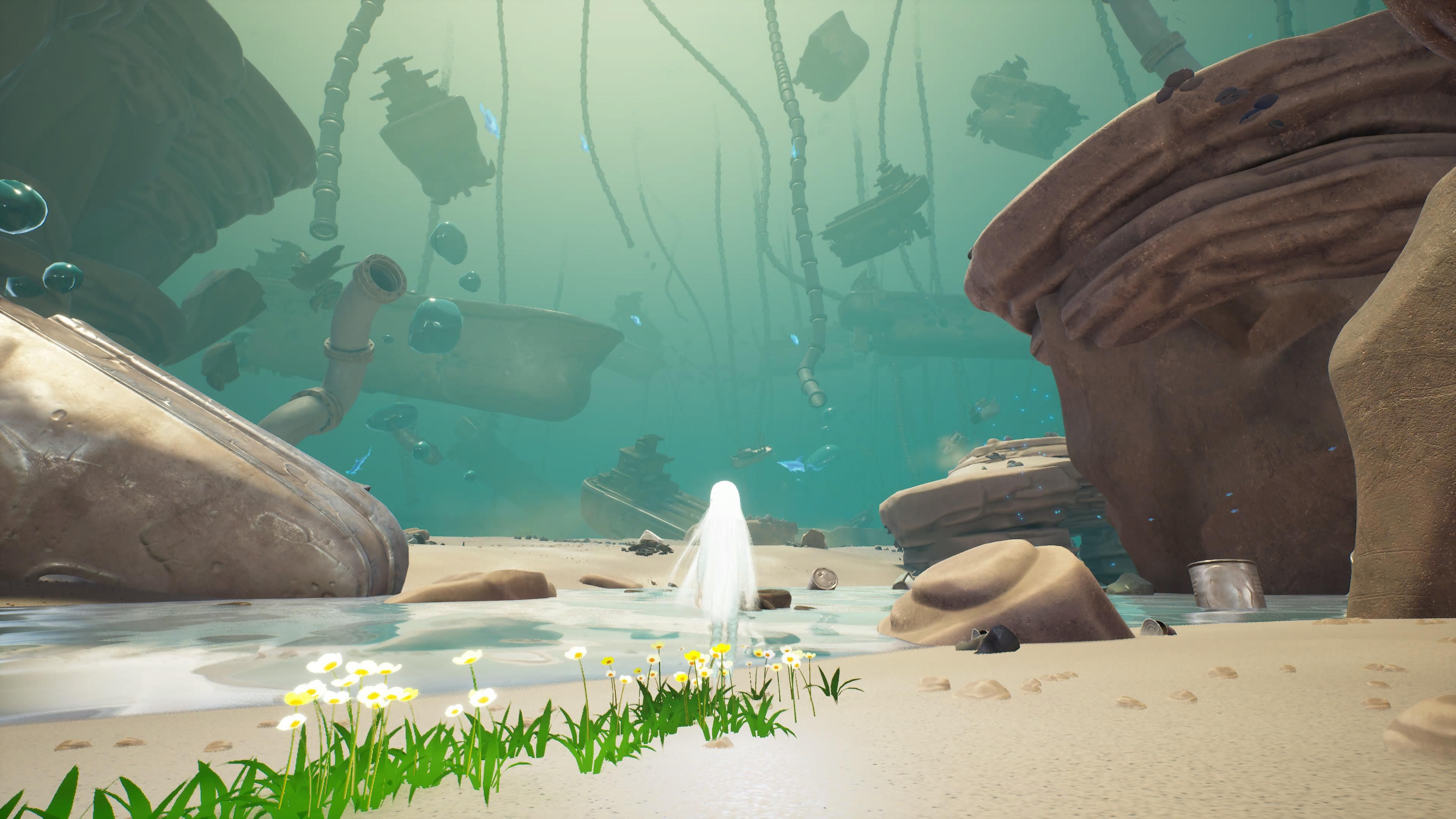Quick Links
After Us continues the trend of video games taking a look at climate change and conservation. It's been something that's been bubbling along in the world of gaming for decades now - after all, Captain Planet even had video game adaptations back in the early 1990s, let alone Sonic the Hedgehog - but as the biodiversity crisis grows, so does the urgency of messaging across all art forms. As such, developer Piccolo and publisher Private Division is well-placed to be part of the zeitgeist.
Within After Us, players take on the role of Gaia, a sprite who has been tasked with exploring a post-human, abstract world full of desolate landscapes and toxic threats. The mission is to recover and reawaken the spirits of a number of animals, to take them back to the central, natural hub of The Ark, and bring with it a second chance at life. It's less immediately optimistic than the conservation-focused climate puzzler Terra Nil, replaced instead with a sense of last-chance emergency.
Environmental - And Not Just In Its Storytelling
However, After Us does come across some challenges along the way. From a plot perspective, it never quite gets beyond its central premise of rescuing the spirits, and in spite of hints towards there being some greater meaning behind the pressure and damage being done to Gaia, this never quite materialises into anything deeper and therefore isn't quite the Shadow of the Colossus sequel some may be after. After Us focuses on the grief of a decaying world, but those after something more may feel disappointed.
As expected, After Us taps heavily into imagery surrounding the climate crisis, with each area of the game linking strongly into a different area of environmentalism and conservation. The game's abstract national park section comes with buzzsaws and wooden furniture, its seas are full of barbed hooks and wrecks, and the section of the game leading up to recovering the spirit of the stag is full of spotlights, rifle shots, and snares. There's certainly something evocative about these scenarios, with the artistic flourish of the world giving the developers room to breathe.
An Oppressive If Effective Atmosphere
This imagery itself may come across as blunt to some. A suburb section filled with junk and waste, factories creating car after car, and even Gaia's footsteps leaving behind a trail of grass and flowers means there's little room for subtlety here. However, sometimes it does pay to be direct, and at its peak - such as when dodging spears when underwater - does help bring about its thematic elements well.
There's a fabulous contrast to be found between the game's central hub of The Ark, a place of safety and life, versus the destroyed planet at large. It's a world that has been through immense pain, which can be seen in what remains of the Pompeii-esque remnants of the long-dead humans and the horror of the Devourers, the brutal husks of not-quite-dead, red-eyed people. Meanwhile, some additional context can be found by unlocking memories from those human statues, slowly piecing together a little bit of what life had been like.
It's not perfect, however, with elements like repeated character and item models meaning that the world feels a little bit smaller than it potentially could. It also sometimes runs against the design of the world at large, with open, large environments being far more effective than those closer, claustrophobic moments. This is in part because of some awkward camera controls, which ties into some of the wider issues that sometimes appear within the gameplay of After Us.
Issues In Execution
From a gameplay perspective, After Us takes the form of a 3D platformer, and although it's often enjoyable there are moments where it does struggle. After Us finds a bit of difficulty with timing-based jumping puzzles where precision is required, particularly within enclosed environments, and it does sometimes suffer from feeling a bit samey, particularly in those moments between unique spirit locations. Combined with the lack of a real sense of story progression, this can mean that pacing begins to falter.
This is also true of moments where combat is required. Overall, After Us is a combat-free experience, but there are moments where the player will be required to fight the Devourers, and this again can feel a little clumsy and forced. It's a shame, as overall the Devourers add a little of a horror dynamic to the game, with the player best placed to run from or otherwise avoid them wherever possible due to the threat they pose.
However, when After Us gets it right it's a truly fantastic platformer. It's extremely engaging when it turns to free-flowing, fast-paced platforming that requires the player to tie their jump, dash, and wall-running abilities together. This is particularly true when After Us turns to vertical platforming, traversing floating debris and ruined skyscrapers in a way that expertly taps into the bizarre world the player finds themselves in.
Our Review Score & Final Thoughts
Overall, this leaves After Us as a flawed but intriguing 3D platformer. Its moments of brilliance are great to behold, such as its varied, dreadful locales and those moments where its platforming truly clicks. However, its lack of character and story development and its more frustrating sections do mean that it's not a perfect game - but at the very least its heart is in the right place.
Source: Private Division/YouTube
After Us releases May 23, 2023 for PC, PS5 and Xbox Series X/S. Screen Rant was provided with a PS5 download code for the purposes of this review.




